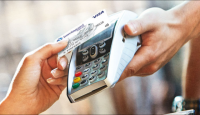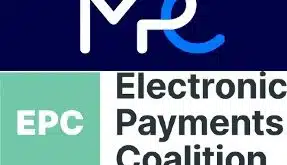Contactless payments may seem like the next evolution of the U.S. payments industry, but the challenges confronting that technology may be greater than those of the ongoing chip migration, industry observers suggested on Tuesday at an industry trade show.
“At the moment, contactless is much more complex, more expensive,” Allen Friedman, director of payment solutions at point-of-sale terminal maker Ingenico North America, said while participating in a panel discussion at the 2017 Payments Summit in Orlando, Fla., sponsored by the Secure Technology Alliance.

Standing in the way of widespread contactless payments adoption are a number of factors, including chronically low consumer adoption of mobile wallets, a lack of dual-interface cards, and the need for more certifications.
As Friedman explained, many merchants, through their acquirers, may be able to complete their EMV certifications for contact-based transactions via a consolidated process for all four major card brands. For contactless EMV, however, “it’s a certification for each card brand,” he said. Additionally, each contactless POS terminal, even those that are part of the same product family, may require separate EMV certification because the size and shape of the device may differ, Friedman said.
Some merchants, however, have moved ahead on contactless. All of Walgreen Co.’s POS terminal are contactless enabled, said panelist Barry Hanen, Walgreen senior manager of card and payment services.
Ingenico and other POS terminal makers like VeriFone Systems Inc. and Equinox Payments have long shipped devices with built-in contactless-acceptance capability, but in many instances that was not activated with the necessary application. “It’s not really a matter of turning on the device,” Friedman said, “but having the application loaded to receive the signal.”
Aside from the merchant challenges, issuers and consumers have to embrace contactless technology, too. There will have to be demand from both merchants and consumers to motivate issuers to update their EMV cards to dual-interface ones, said Randy Vanderhoof, executive director of the Secure Technology Alliance, formerly known as the Smart Card Alliance. Vanderhoof moderated the discussion.
At least two issuers see potential in contactless payments. “I’m more optimistic for merchants to move to contactless who already have EMV,” said panelist Karen Czack, vice president of industry engagement and regulation for American Express Co.’s global network business. Czack added that consumers can request dual-interface versions of AmEx cards.
Discover Financial Services is similarly optimistic, said panelist Ellie Smith, head of the Discover Chip Center of Excellence, Discover Global Network. Consumers have been quick to adapt to behavior changes required by EMV contact cards, Smith said. Contactless cards may have a chance because consumers are familiar with cards already, she said.
So far, however, there has not been a rush for dual contact/contactless cards among issuers that work with processor Vantiv Inc., cautioned panelist Steven Cole, senior product manager of EMV. “Today, we are not seeing high demand for dual-interface cards,” Cole said.
That’s important because of the implications for mobile wallets, which depend on contactless interaction between a smart phone and a point-of-sale terminal. But Smith said not all consumers are willing to use their phones for payments.
Indeed, Hanen said Walgreens thought mobile wallets would leapfrog contact EMV because consumers might not tolerate the perceived inconveniences of contact EMV transactions, including slow transaction times. “We had this notion it would be such a bad experience, here come the mobile wallets,” Hanen said. “We found it wasn’t that hard of an experience for our customers.”




